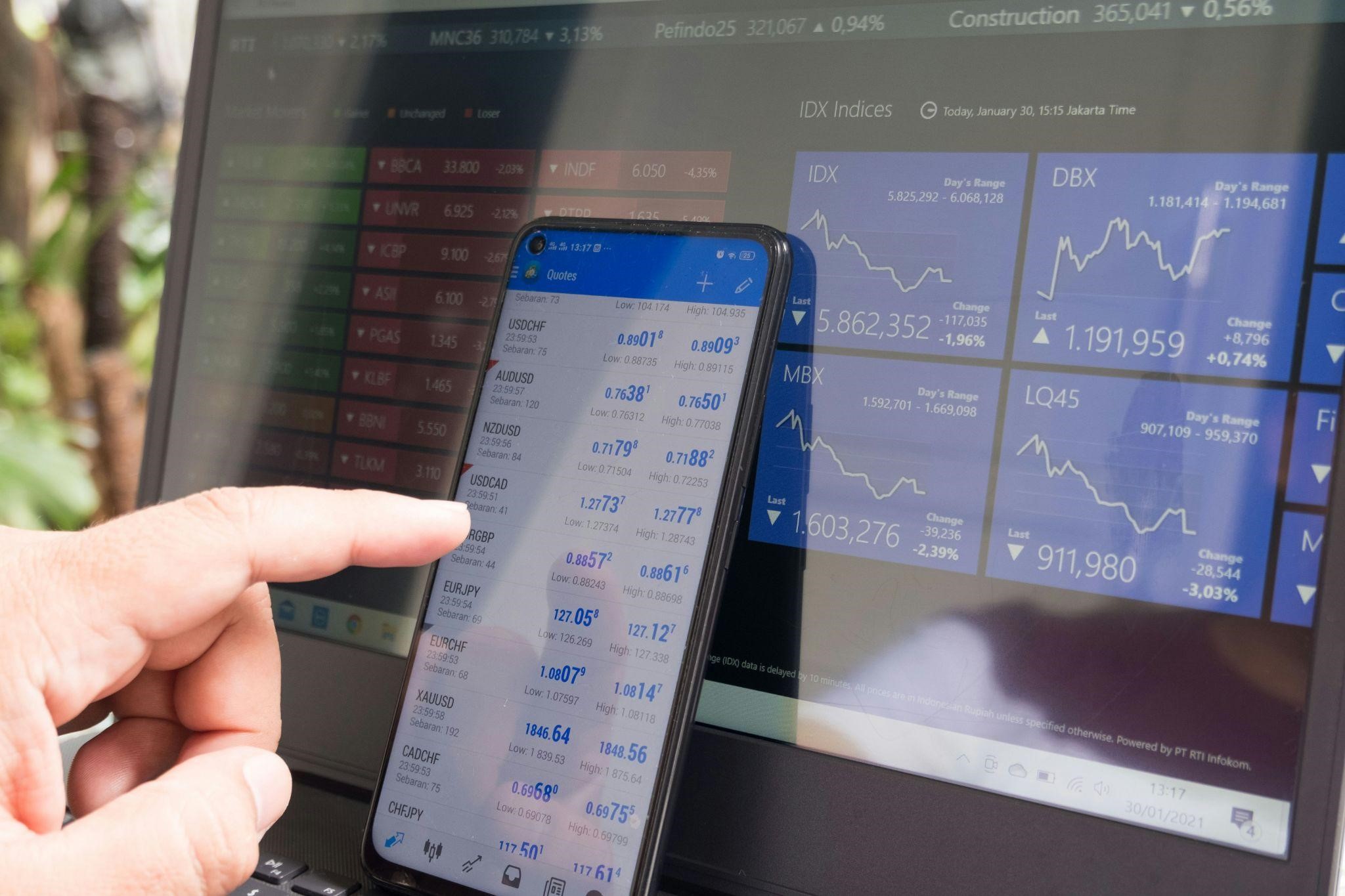How to Calculate Cross Rates and Their Importance in Forex

Did you know that over $6 trillion is traded daily on the forex market? And in today's highly liquid foreign exchange market, cross rates offer an alternative for traders looking to transact directly between currency pairs. Many traders, whether fresh-faced or seasoned, wrestle with the complexities of cross rates and their calculations.
It's completely normal to not have all the answers right away. After all, forex trading can sometimes feel like learning a new language.
Today, we're stripping back the jargon to bring you a clear, concise guide on how to calculate cross rates and why they're so crucial in forex trading.
What is a Cross Rate?
Simply put, a cross rate is the exchange rate between two currencies when neither involves the US dollar. Typically, in the forex market, most currency pairs are quoted against the US dollar, often seen as the 'anchor' currency. However, when traders or businesses need to exchange currencies directly without converting to US dollars first, they use what is known as a cross rate.
The Distinction Between Cross Rates and Standard Currency Pairs
Consider a typical currency pair involving the USD, like the USD/JPY. The price indicates how many Japanese yen are needed to purchase one US dollar. However, if we look at a pair like EUR/GBP, this shows how many British pounds you need to buy one Euro.
Here, the US dollar doesn't feature at all.
This distinction is vital as it allows for more direct and potentially cost-effective trading opportunities between markets that do not primarily use the USD.
Cross-Currency and Non-USD Currency Pair
Diving deeper, cross-currency pairs, or non-USD pairs, bring unique advantages to the forex table. They allow traders in countries where the USD is not a major currency to trade more effectively among themselves.
For example, an Australian business looking to buy goods from Europe may prefer to trade AUD to EUR directly, using a cross rate to bypass fluctuating USD rates.
These pairs can sometimes exhibit less market volatility compared to major pairs involving the USD, although this can vary widely based on geopolitical and economic factors affecting the specific currencies involved.
By focusing on cross rates, traders can unlock a deeper layer of the forex market, revealing opportunities hidden by the fluctuations of the USD.
Why are Cross Rates Important in Forex?
Escaping the dominance of the U.S. dollar opens doors to a world of opportunity. Cross rates serve as the key, unlocking a more streamlined approach to non0USD forex trading.
For instance, consider a Swedish investor interested in trading with Japan. By utilising the SEK/JPY cross rate, the investor bypasses the step of converting first into USD, potentially saving on transaction costs and avoiding double exposure to currency fluctuations involving the US dollar.
The Impact on the Forex Market
The existence of cross rates facilitates a more dynamic and diverse trading environment. Traders are not limited to thinking in terms of USD-centric pairs but can strategise across a broader spectrum of currencies.
This capability is particularly advantageous in a globalised economy where businesses and investors might need to move swiftly between markets in Asia, Europe, and beyond without engaging with the US dollar.
This flexibility also supports better risk management by offering alternative paths during periods of USD instability. When the dollar is experiencing high volatility, traders can pivot to cross rates involving more stable currencies to maintain their market positions without significant risk exposure.
A Practical Example: EUR/JPY Cross Rate
To illustrate, let's take the EUR/JPY cross rate. If you're an investor looking to move from Euro to Japanese yen, you would look at this cross rate to understand how many yen you can get for your Euros. The rate itself is derived by comparing both currencies against a common counter, usually the USD, and then calculating the rate indirectly.
So, if EUR/USD is trading at 1.15 and USD/JPY at 110, the EUR/JPY rate would typically be around 126.5 (1.15 multiplied by 110).
A Counterintuitive Insight: Smaller Markets and Cross Rates
Interestingly, smaller or less commonly traded currencies can sometimes offer surprisingly profitable opportunities through their cross rates. While these might carry higher risks due to less liquidity and greater spread costs, the potential for significant movements in response to local economic changes can lead to advantageous trades that might not be as evident in more heavily traded pairs.
Navigating Challenges
Understanding and navigating cross rates isn't without its challenges.
The lack of a direct USD component can lead to unexpected volatility when major US economic announcements occur, as traders rush to recalibrate their valuations across all currencies. Additionally, not all cross rates are equally liquid, which can lead to higher transaction costs or difficulties in executing large orders without impacting the market price.
Despite these challenges, the advantages of incorporating cross rates into a Forex trading strategy are clear. They provide access to a wider range of trading opportunities, enhance the ability to respond to regional economic changes, and can offer more favourable trading conditions.
By understanding and utilising these rates effectively, traders can access a wider array of trading options, manage risks better, and potentially increase profitability in a competitive market.

How to Calculate Cross Rates
Calculating cross rates is a fundamental skill for anyone involved in the forex market. Whether you're a business needing to pay overseas suppliers, an investor looking to diversify your portfolio, or a traveller planning a trip abroad, understanding how to calculate cross rates can give you an edge in managing currency exchanges more effectively.
Our goal is to simplify these concepts so you can approach forex trading with confidence and expertise.
Understanding the Basic Cross Rate Formula
At its core, the calculation of a cross rate involves relating the exchange rates of two currencies without the intervention of the US dollar.
Suppose you need to determine the exchange rate between two currencies, Currency A and Currency B, and you have their exchange rates relative to a third currency, Currecny C. The formula looks like this:
Cross Rate - Rate of A to C / Rate of B to C
This formula is used when both currencies are quoted in the same fashion – either both direct or both indirect quotes relative to Currency C.
For example, if you need to determine the EUR/GBP rate but only have EUR/USD and USD/GBP, here's how you'd proceed:
- EUR/USD: Let's say the rate is 1.10, meaning one Euro buys 1.10 US dollars.
- USD/GBP: Suppose this rate is 0.75, meaning one US dollar buys 0.75 British pounds.
To find the EUR/GBP rate, multiply these two rates:
EUR/GBP = EUR/USD x USD/GBP = 1.10 x 0.75 - 0.825
This result tells us that one Euro can buy 0.825 British pounds.
Step-by-Step Calculation: A Simple Example
Let's apply this formula to a real-world scenario:
Imagine you are an investor looking to trade euros for Japanese yen, but the direct rate is not available.
You know the EUR/USD rate is 1.15, and the USD/JPY rate is 130.
By multiplying these rates, you can find the implied EUR/JPY rate:
EUR/JPY - EUR/USD x USD/JPY - 1.15 x 130 = 149.5
This calculation shows that one Euro is equivalent to 149.5 Japanese yen under current market conditions.
Triangulation Method: Converting Between Three Currencies
The triangulation method extends the basic principle of cross rate calculation to involve three different currencies. This method is particularly useful in regions where trade does not involve the USD or where direct exchange rates are unavailable.
For instance, if a business needs to convert EUR to AUD and know the EUR/USD and AUD/USD rates, it can use triangulation:
EUR/USD: 1.15
AUD/USD: 0.70
To find the EUR/AUD rate, divide the EUR/USD rate by the AUD/USD rate:
EUR/AUD = (EUR/USD) / (AUD/USD) = 1.15 / 0.70 = 1.643
This calculation reveals that one Euro buys approximately 1.643 Australian dollars.
Tools and Software for Calculating Cross Rates
Several digital tools and software platforms can simplify these calculations, ensuring accuracy and saving time for traders. Forex trading platforms like Meta Trader provided by FXDD offer built-in calculators and real-time data feeds to automatically compute cross rates based on the latest market prices.
These tools are invaluable for traders who need to make quick decisions based on accurate currency conversions.
Cross Rate Matrix: Understanding Multiple Rates Simultaneously
A cross rate matrix is a powerful tool used by traders to view multiple cross rates at once. This matrix format allows traders to quickly assess exchange rates between various currency pairs, enabling them to spot trends, correlations, and arbitrage opportunities more effectively.
Consider a simplified example of a cross rate matrix involving three currencies: EUR, GBP, and USD. The matrix might look something like this:
| EUR | GBP | USD | |
| EUR | - | 0.90 | 1.10 |
| GBP | 1.11 | - | 1.31 |
| USD | 0.91 | 0.76 | - |
This matrix is especially useful in markets where several currencies are frequently traded against each other.
Wrapping it Up: Mastering Cross Rates
Cross rates can be confusing at first. You might wonder, "How do these rates affect how I trade?"
We've covered a lot today—from the basic mechanics of cross rates to their strategic importance in forex markets. Remember, the key takeaway is that cross rates offer you more direct control over your currency trades, allowing you to bypass the USD and potentially reduce costs and improve profitability.
They open up a world where you are no longer limited by the most common currency pairs, giving you the flexibility to leverage opportunities across a broader spectrum of global currencies.
Don't let the momentum stop here. At FXDD, our approach to forex trading is designed to empower our clients. We offer real-time cross rate calculations and a user-friendly cross-rate calculator that ensures you can trade and transact with confidence. Our commitment to providing personal connection and fast service sets us apart from our competitors.
Reach out to us at FXDD, and let's turn your newfound understanding of cross rates into real-world trading success. Our team is ready to support you every step of the way, ensuring you have the tools, advice, and backing to thrive in the dynamic world of forex.

